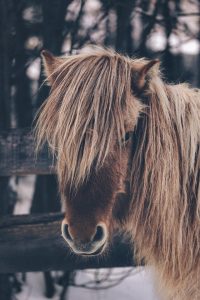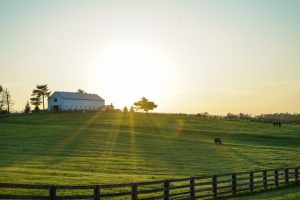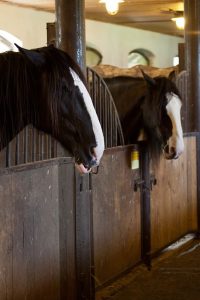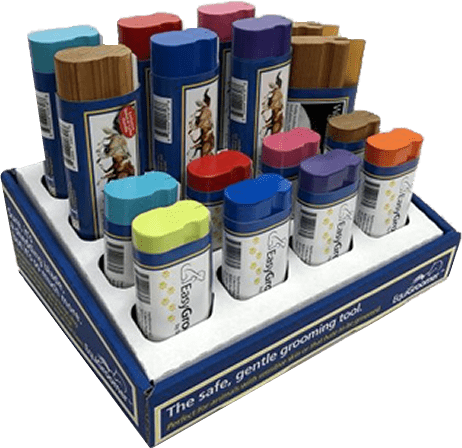Our last blog focused on how to protect your horse from spring mud and the abundance of moisture in paddocks, pastures, and stalls. Today’s post will focus on another common spring issue, shedding! Learn how to survive your horse’s spring shedding AND what it may reveal about your equine’s health.
Spring Means Shedding … and a LOT of It!
Ahh, springtime! Warmer temperatures, longer daylight hours, and beautiful new growth every way! But it also means something else, your horse’s spring shedding of their heavier winter coats.
While most horses will begin shedding with the emergence of spring, this is not true for all horses.
Keep reading to learn why some horses may not shed on time or as quickly as others.
Consistent Equine Grooming Is Critical for Your Horse’s Health!
Maintaining a regular grooming routine year-round helps ensure proper shedding and new hair growth!
Check out our 20-Piece Equine Tack Shop Start Kit to make grooming your horse easier, faster and more comfortable!
For individual or bulk orders, call 860-573-0604 or click here to send us an email.
Maintaining a regular grooming routine year-round helps ensure proper shedding and new hair growth!
Check out our 20-Piece Equine Tack Shop Start Kit to make grooming your horse easier, faster, and more comfortable!
For individual or bulk orders, call 860-573-0604 or click here to send us an email.
It’s NOT About Warmer Temperatures
While shedding is a springtime nuisance, it’s actually a “complex physiological process” which can tell you a lot about your horse’s overall health.
Did you know that your horse’s spring shedding is NOT triggered by warmer temperatures? Equus Magazine explains:
Shedding is not triggered by temperature. It’s linked to photoperiods. As the hours of daylight increase, a horse’s winter coat begins to loosen and shed. This process started way back in late December, but you usually won’t see the obvious, hairy results until now.
Each horse should shed on a consistent schedule each year; even though that timeframe may be different for each horse. Individual horses will also shed their winter coat in the same pattern each year (i.e., shedding from their necks first and then along their flanks).
But what if your horse is not shedding as usual? Below we explore some of the health reasons a horse may not be shedding “on time.”
The Johnny-Come-Lately Shedding Horse
Is your horse keeping his heavy winter coat longer this year? There may be a few medical reasons behind it.
a few medical reasons behind it.
Cushing’s Disease
- If your horse normally sheds his winter hair at the same time each year, shedding his hair late could be a sign of Cushing’s Disease (especially if your horse is over 7 years old). Cushing’s Disease is a common hormonal disorder in equines involving a dysfunctional pituitary gland which can disrupt timely shedding.
- Another sign of Cushing’s Disease includes long “cat hairs” under their belly and chin which typically shed last.
- Contact your veterinarian right away to get a proper diagnosis and treatment plan (and to avoid the development of laminitis).
Deworming
Another issue behind a horse shedding late may involve the need for deworming. Usually, administering a dewormer – if needed – will encourage the complete shedding of their winter coat. Your veterinarian can best advise you.
It Might be Your Barn!
If your horse is completely healthy and parasite-free, your barn may be at fault! Since the extra daylight hours trigger a horse’s winter coat to shed, artificial lighting and dark barn interiors may cause a delay in timely shedding. To remedy this issue:
fault! Since the extra daylight hours trigger a horse’s winter coat to shed, artificial lighting and dark barn interiors may cause a delay in timely shedding. To remedy this issue:
- Give your horse 24-hour access to pastures.
- Adjust your turnout schedule; or
- Use full-spectrum bulbs in your barn’s lighting fixtures timed to turn on and off automatically for providing a total of 16 hours of daylight (natural and artificial).
Not Enough Grooming and Brushing
While medical issues may be behind your horse’s late shedding, it might also be something as simple as not providing enough vigorous grooming and brushing to effectively promote your horse’s normal shedding schedule.
Make sure you keep up with your regular grooming and brushing to help stimulate the hair follicles for shedding the old winter coat and encouraging new healthy growth!
Always check with your regular vet to properly diagnose and treat your horse relative to their health history and overall condition.
Additional Reading:
Spring Shedding in Horses: Troubleshooting a Late Shedding Horse
What Shedding Can Tell You About Your Horse’s Health
Help Your Horse Shed its Winter Coat
Image Credits:
Photo by Tim Savage from Pexels
Photo by Eberhard Grossgasteiger from Pexels
Photo by Brandon Randolph from Pexels
Photo by Rodolfo Quiros from Pexels
Image by PublicDomainPictures from Pixabay
Product Image: Courtesy of EquiGroomer


